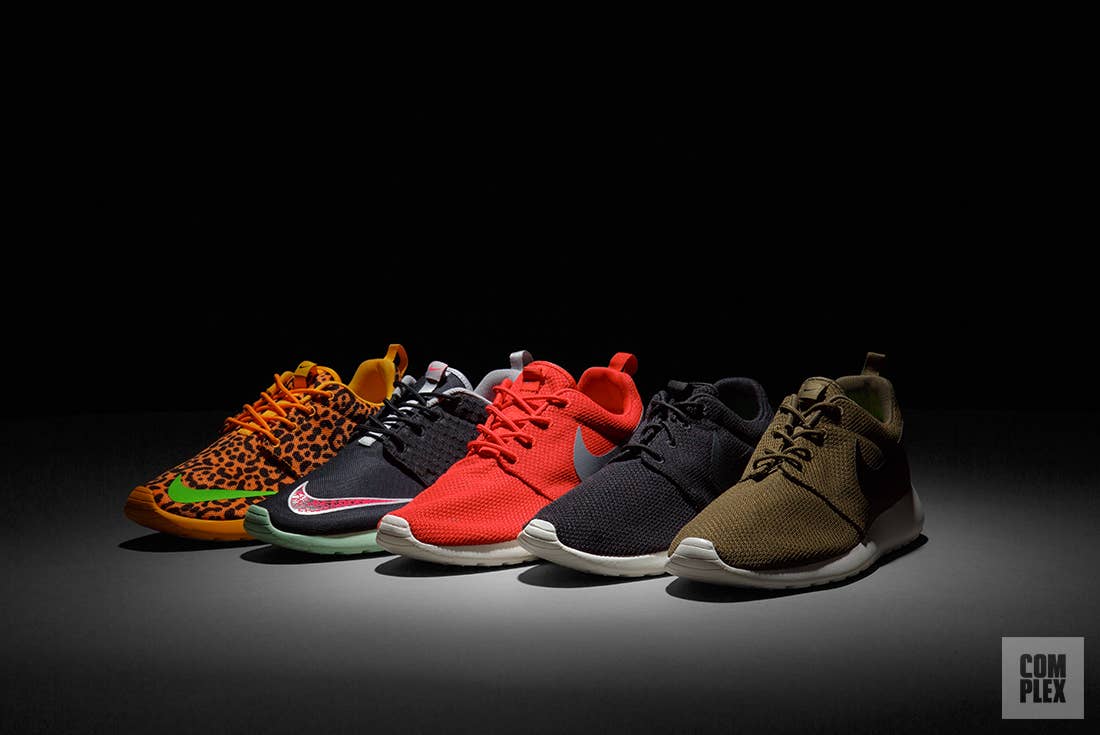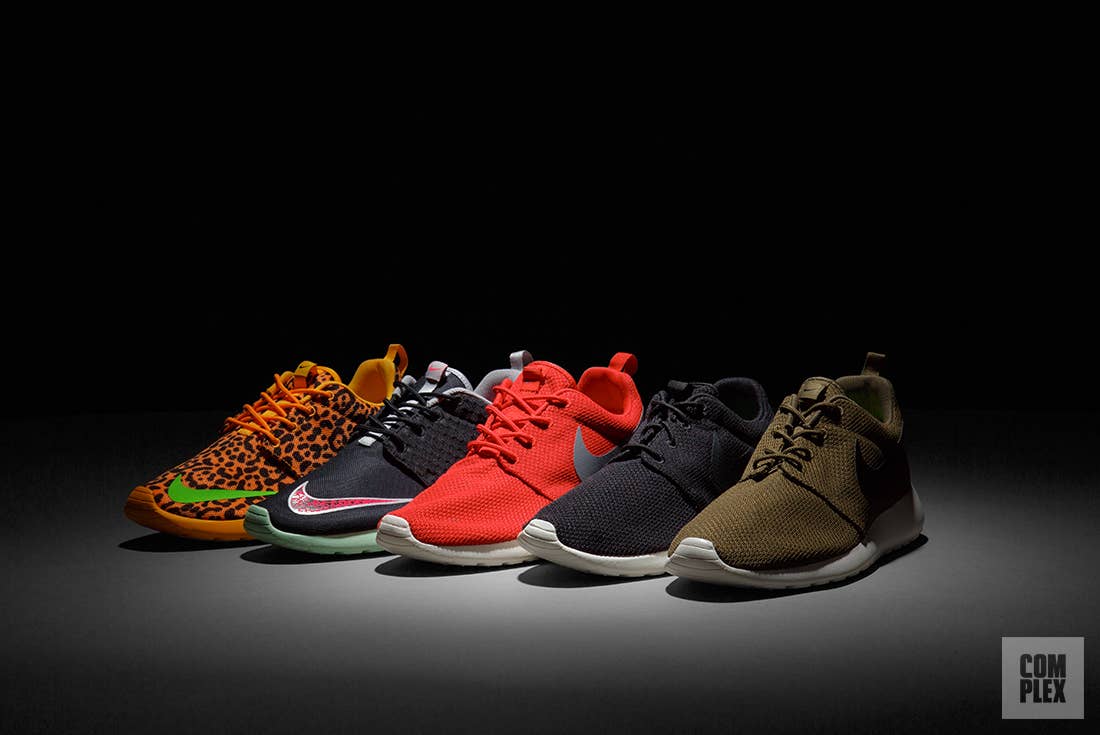
The Nike Roshe Run has a bad reputation in 2019. It’s become the footwear signifier for the uncool, the uninitiated into the world of sneaker hype, a stain found during deep dives into the Instagram accounts of those who wouldn’t want you to know they’ve owned a pair. But this wasn’t always the case for the Roshe: It led the minimalist movement in the footwear industry and was a stepping stone for a lot of people who today fancy themselves “sneakerheads.”
Designed by Dylan Raasch more as a personal project than a company-driven initiative, the original Nike Roshe Run released in 2012 with a one-piece outsole, a two-piece upper with minimal lacing, and a streamlined look. Inspired by Zen ideology—the original “Iguana” colorway took cues from moss found in Buddhist temple gardens—the intensely simple design offered a fresh aesthetic in the burgeoning world of lifestyle sneakers. But then came the real kicker: The Roshe Run’s ticket price read just $70.
“It’s been a while,” says Joe Staley, owner of Kentucky sneaker boutique Oneness, thinking back to those days. “But I feel like I remember the first thing noticeable was the price. And the shape. It was something new, and we felt at the time that a lower-priced model may be a solid buy, and the shape felt right. None of us knew what it would end up being.”
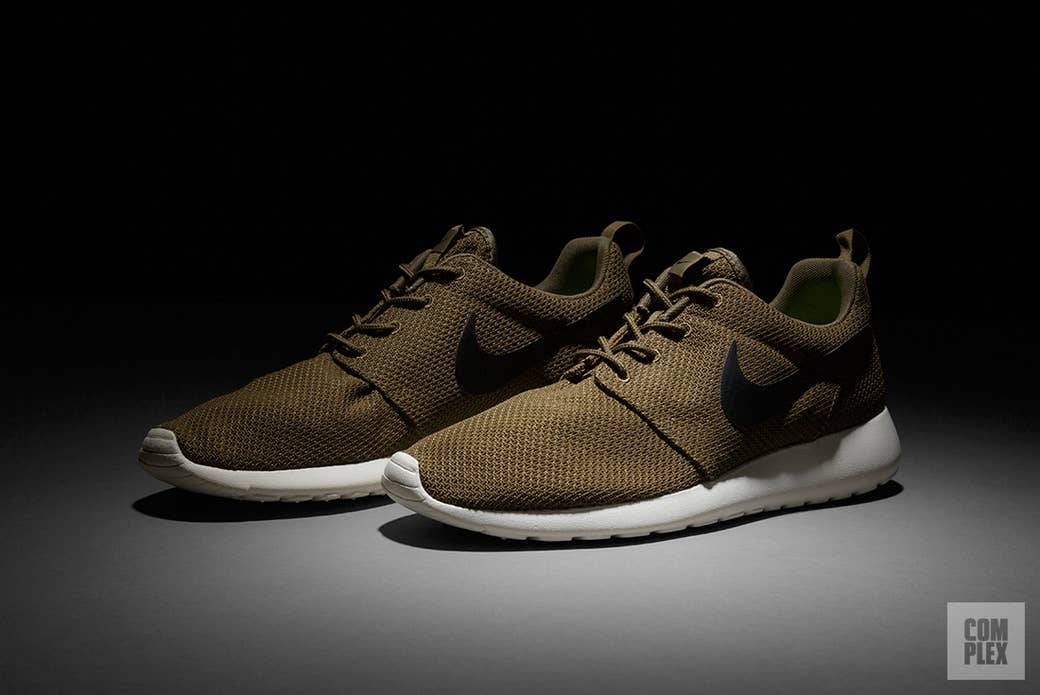
The Roshe had a run all its own, taking over lifestyle sneaker design in a way generally reserved for the latest Jordan release. The shoe came out with no marketing campaign, no flashy unboxing events from celebrities, and in a day and age—yes, we’re calling 2012 a day and age—when the boutiques and just a few influencers held the most sway. The shoe was able to stay a cornerstone of sneakers until 2014, simply because it was cheap, easy to purchase, even easier to wear, and co-signed by the right people. Many swore by their Roshes, partly because the shops and websites they trusted told them they were cool. And they were.
“The success,” Staley says, “was because the group of stores selling them were the stores you want to buy from.”
Then came an organic social media push, still a relatively new phenomenon at the time. Sean Go, leader of the TeamRoshe Instagram account—one that Staley credits with really giving the sneaker a community of followers—says the Roshe caught his eye immediately. “Its simplicity, low price point, and comfort were pretty unique at the time, and how versatile they were from a wearability standpoint drew me in,” Go says. Fans also enjoyed what Go calls the “throwback mentality of the chase,” which meant scouring the globe to find new colorways as Nike bypassed traditional launch campaigns for the shoe.
Staley says he was selling 300 to 500 pairs of almost every color he could get his hands on, thanks to the sneaker’s Instagram following. None sold better, though, than the “Yeezy” colorway of black and volt pink. For his part, Go pursued all things Roshe in the years following the shoe’s release. Along with Staley, he was invited to Nike headquarters in Oregon to share his thoughts on the direction of the model. Of course, receiving a special “Team Roshe PE,” officially dubbed the “Heart & Sole,” limited to just over 10 pairs, was a nice bonus.

Raasch began creating the Roshe in 2010, with a focus on value. His initial brainstorm concept wasn’t well received at Nike, so he developed the idea in his free time. Because the shoe wasn’t a performance model and was designed “off brief,” he had no material limitations and designed as simply as possible while keeping the Nike natural motion waffle pattern outsole. It was created to be worn barefoot or with socks, dressed up or down, to walk or travel in. Raasch once said the Roshe was conceived with the idea that the simpler it was, the more profound its impact would be.
Using a special EVA foam compound, he created a one-piece outsole and eliminated the need for a rubber mold, factoring into the design while reducing price.
During its heyday, the Roshe—the “Run” half of its moniker was dropped along the way—took on more than two dozen variations, releasing with a Flyknit upper and in the form of a sneakerboot. Nike CEO Mark Parker even wore a Fragment collaboration Roshe when he met with then-President Barack Obama.
The sneaker’s price point allowed for people of all ages and demographics to embrace it. But it also led to its plunge in popularity.
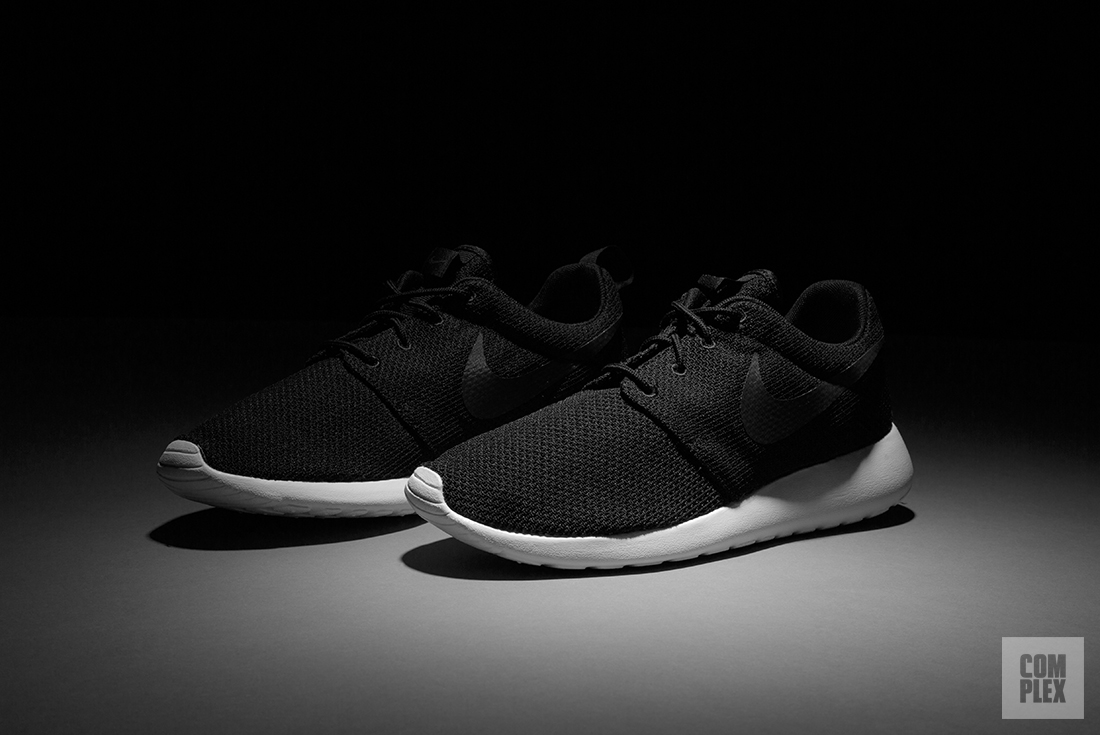
Lawrence Schlossman, brand director at Grailed and one-time editor of Complex’s former Four Pins, says the shoe offered a lot of value from the comfort and aesthetic standpoints, but then became overexposed. “I owned a pair or two when it first came out and appreciated it for what it was,” he says. “It was clearly super influential. It became a butt of the joke because there were so many. You could walk down the street and see 20 pairs in 20 minutes.”
Nike caught up to the demand, over-producing the shoe and “killing it for the younger generation,” says Derek Curry, owner of Sneaker Politics, a footwear boutique in Louisiana. Sometime in 2014, the Roshe started sitting on shelves, and colorways were “getting lazy.” With the massive success of the Roshe came a run from competitors to cash in. The look soon wasn’t all that new, and technology—such as Adidas’ Boost—took comfort to an entirely new level.
“The Roshe was great at the time,” Curry says, “but technology moved on and left the Roshe behind.”
By September 2016, the release of the Roshe 2 was met with little interest from collectors. As with nearly any successful sneaker, Go says, the Roshe was milked to the point that consumers tired of the model, with too many colors and variations that fans didn’t care for, allowing for Roshe fatigue to set in. “Add to the fact that Nike re-released a ton of original colors that collectors may have paid double or triple the retail price to obtain, [and] it left a sour taste in the Roshe purists’ mouths,” he says. “The introduction of Adidas Boost definitely helped end the Roshe's popularity, as it simply became the new bar for comfort in a sneaker.”
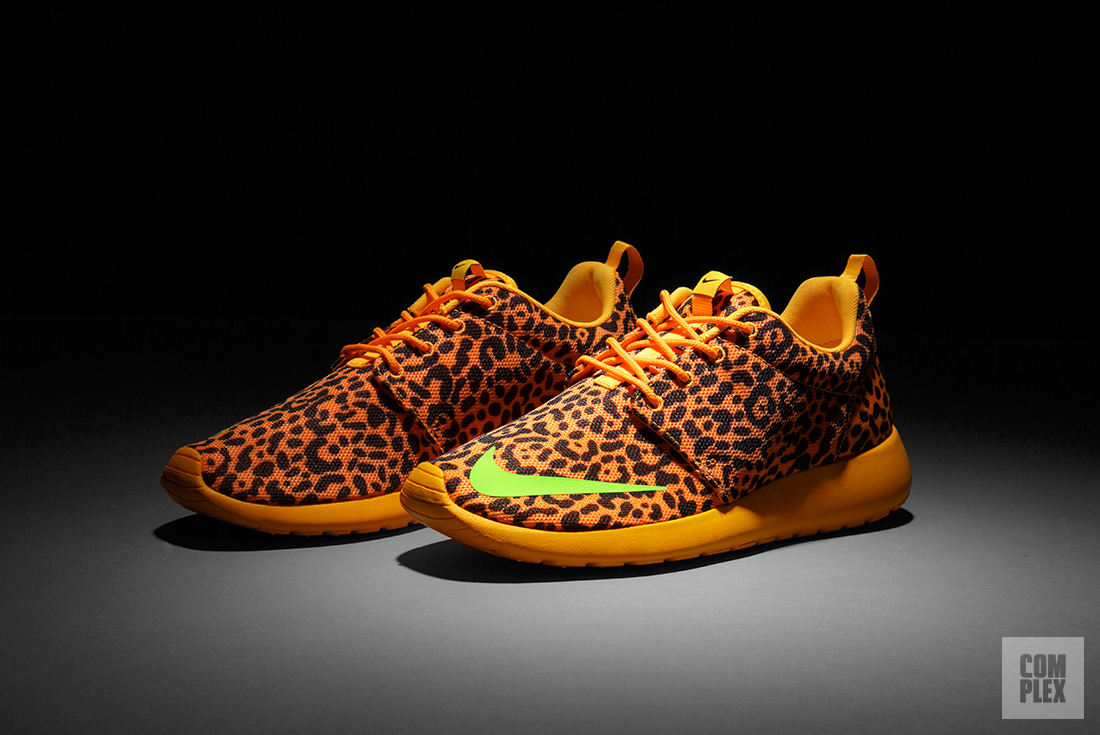
The Roshe remains available on Nike’s website, but Matt Powell, senior industry advisor for sports for the NPD Group, says sales of the line dropped “substantially” from 2017 to 2018. And the prices on StockX, for example, have slipped well below the sneaker’s original $70 price point, with many colorways going for as little as $35 in the most recent transactions.
“Once there ended up being millions of units in the marketplace and at every Finish Line and Foot Locker and Dick’s Sporting Goods,” Staley says, “it was just too late for it being cool anymore.”
Seeing the style on everyone—moms and dads were in the mix—“sullied the shoe,” says Schlossman, for discerning collectors and sneakerheads. “There is no denying that sneakerheads and those who care about fashion can be fickle and want to be ahead of the curve,” Schlossman says. “They want to stand out, and the idea of self-expression is hard when you are wearing a shoe everyone else has.”
Still, Schlossman says that, going back a decade, there wasn’t a lifestyle shoe that had the impact of the Roshe. “It truly felt like a shoe release able to capitalize on the mainstreaming of sneakerhead culture,” he says. “The Roshe is very special and specific in and of itself. Everyone loved that shoe during the early days: the style guys, sneakerheads, average guys, your dad. We haven’t seen since a shoe that truly everyone wanted that they could also get. That is a very rare, special thing Nike was able to tap into based on comfort, the cool, and availability.”
Not everything revolutionary is going to last forever. Sometimes a shoe comes, leaves an impact, and has to be retired to make room for new ideas or, in this case, new models.
Even though the Roshe has faded, Go has fond memories of the run and the first “grail colorway to drop,” the “Calypso.” He still owns two pairs.

